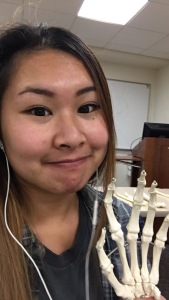 My name is Marjorie Morales and I am a rising senior Kinesiology major, and creator of this website, IDEAL STEM. Since starting college in Fall 2013, I have taken a total of 17 STEM classes and 7 non-STEM. As you can guess, I’m very familiar with the typical STEM classroom: you walk in, sit down in your self-designated seat, listen to lecture, and then walk out. Straightforward.
My name is Marjorie Morales and I am a rising senior Kinesiology major, and creator of this website, IDEAL STEM. Since starting college in Fall 2013, I have taken a total of 17 STEM classes and 7 non-STEM. As you can guess, I’m very familiar with the typical STEM classroom: you walk in, sit down in your self-designated seat, listen to lecture, and then walk out. Straightforward.
If lectures are the only type of educational experiences that you know, then this type of classroom doesn’t seem odd. After all, there is so much to learn in the world of science, and we only have 55 minutes to attempt to get through it all. It makes sense to keep chatting to a minimum in order to make the most of lecture.
It wasn’t until I visited Professor Terry’s Education class that I realized how drastically different STEM classes were from others. I was invited by a fellow student to visit this class and basically talk about my experience as a STEM major at Oxy. I fully expected to spend a total of 15-20 minutes in the 85 minute class and then leave. I was so surprised when Professor Terry actually spent time at the beginning of class to check in with every single student, all 20 of them. Some students didn’t have much to say, but some students expanded on life updates from the past week, indicating that this was a regular occurrence. It was a very personal moment that I had never experienced in any of my science classrooms.
I started feeling as if my educational experience lacked that interpersonal component that makes college so engaging and unique. I don’t really know my classmates or my professors very well, and they don’t know anything about me either. So my question is why? Why don’t we talk to each other? And do interpersonal classrooms have a valuable place in STEM classrooms?
My answer is: Yes, I do think that such classrooms are valuable, even in STEM. Despite STEM being regarded as “truth” and “fact,” I don’t think that means classes should feel removed from human experience. As if somehow science is separate from real life.
I could see how it would be rather inconvenient to spend half a class talking about life updates, especially when the introductory classes have 36 students, but that doesn’t mean that all human interaction has to go away completely. I personally feel more connected to my professors when they ask me what I did over the weekend, or if they just ask me how I’m doing in general. I’m very shy when it comes to asking for help, but my relationships with the Kinesiology professors are the reason why I’ve been able to succeed in my major. (Full disclosure: I talk to my advisor at least twice a month just to talk about life updates, both academic and personal.) So when I step into my Kinesiology classroom, I do not feel like I’m a guest in my professor’s territory. Instead, I feel like I’m an active participant, meeting in the classroom to engage with the material. That’s the type of feeling that made me stay in Kinesiology: that my presence in those classes actually mattered.
So while there is a belief that STEM classes should be taught differently from humanities classes, that doesn’t mean that that interpersonal conversations don’t have value. While such conversations may not directly contribute to a student’s exam score, it just might help that student who’s struggling to feel more comfortable in class. And that comfort and belonging is what will certainly help them succeed.
Marjorie Morales ’17 is a Kinesiology major and student researcher on IDEAL STEM. She can be contacted via email marjoriemorales@oxy.edu or on Twitter @GammaCas.